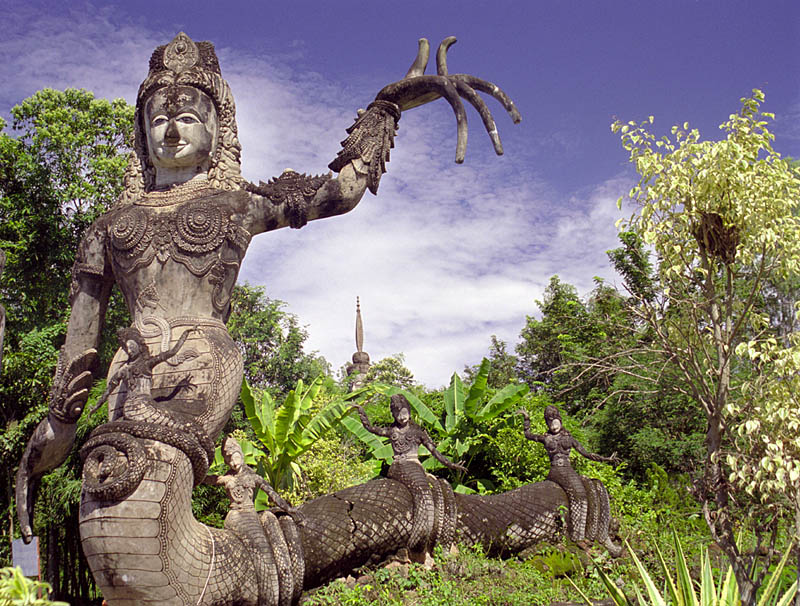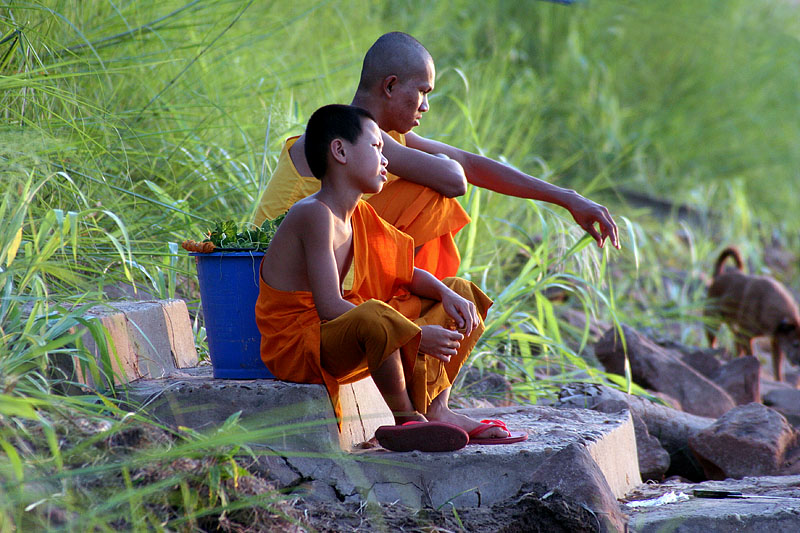Nong Khai and Khong Jiam in Northeast Thailand are not on the mainstream tourist trail, but this is slowly changing as more holidaymakers look to step away from the expected routes for at least part of their holiday. Travelling at a tangent will reveal a more traditional way of life and a culture built around a strong individual identity, indigenous cuisine and historic skills that produce high quality hand woven fabrics. High value is placed on hospitality and as you travel around the welcome you receive will be as warm as the weather.
A scenic part of the Mekong River
Khong Jiam is 500kms south of Nong Khai in Ubon Ratchathani, Thailand’s easternmost province. The location really seals the deal as it runs along a scenic part of the Mekong River, with Laos on the other side. Base yourself at the Tohsang Khong Jiam Resort and you’ll have the whole province to explore, including prehistoric rock paintings, riverside villages, national parks, waterfalls and of course the Mekong. Its strong folk culture is expressed in the cuisine, handicrafts, bronze-ware and traditional events such as the Candle Festival held every July. It is also offers easy access to Southern Laos.
Resort and you’ll have the whole province to explore, including prehistoric rock paintings, riverside villages, national parks, waterfalls and of course the Mekong. Its strong folk culture is expressed in the cuisine, handicrafts, bronze-ware and traditional events such as the Candle Festival held every July. It is also offers easy access to Southern Laos.
Similarly Nong Khai nestles along the Mekong’s path just across from Laos and the pace of its neighbour seems to have seeped into the psyche, as the whole region is made up of sleepy riverside towns and villages that are great to explore at leisure with pockets of colonial and Khmer architecture. One of the most enjoyable ways is by bike following the river through farms, wetlands and villages stopping off to watch fisherman and craftsman at work and exploring temples you see along the way.
The Friendship Bridge
What really put Nong Khai on the map was the construction of the Friendship Bridge by Australia and Japan to connect Thailand with Laos. This makes it an ideal inclusion in any overland tour between the two countries, and Vientiane, the Laos Capital, is a short distance over the border.
Don’t hurry through, as every visitor should enter the surreal world of the Sala Kaew Ku Sculpture Park created by Luang Pu, a mystic Shamen, over a 20 year period. In fact if you continue on to Vientiane you can see an earlier series of work constructed prior to his expulsion from his native Laos after the revolution. The park contains more than 100 concrete sculptures, some up to seven stories high, all rather eccentrically depicting Buddhist and Hindu images. The centre piece is the Wheel of Life that shows the cycle of influences and phases, which start at one's conception and end at one's death.
after the revolution. The park contains more than 100 concrete sculptures, some up to seven stories high, all rather eccentrically depicting Buddhist and Hindu images. The centre piece is the Wheel of Life that shows the cycle of influences and phases, which start at one's conception and end at one's death.
The surreal theme continues if you visit during October’s full moon, which is when the Naga fireballs shoot out of the Mekong. This apparent natural phenomenon symbolises the resident Naga’s (serpent) celebration of the end of the rains. Other popular festivals include the Rowing Festival and Chinese Dragon Festival in late October / November and the Rocket Festival in late May / early June. All are a great time to be in town, but book early.
Friendly, surreal and scenic, Nong Khai doesn’t really fit neatly into any pigeonhole, but it’s one of those places that you feel drawn to and whilst there will probably spend too much time just watching river life pass by. No world icons, just precious holiday experiences.

